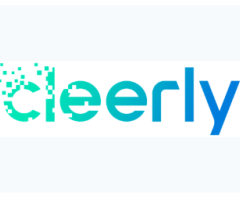
February 19, 2009 - The Society for Women's Health Research and the Medical Imaging & Technology Alliance (MITA) reminded women of the diagnostic technology available that can detect heart disease while it is treatable, and released a fact sheet to help patients and their families better understand the noninvasive diagnostic technologies that can be used to help detect coronary disease.
The fact sheet released today provides information on echocardiography, coronary computed tomographic angiography (CCTA) and electrocardiogram (ECG) and other technologies and innovations that physicians may utilize and recommend to their patients.
While angiograms is the most common means of diagnosing heart disease, noninvasive medical imaging's role in cardiology, such as echocardiography continues to dramatically change the way patients are diagnosed and treated. A recent study by Harvard University found that noninvasive CCTA is more cost-effective than current tests for diagnosing women with low risk of a heart attack who come to the emergency room with acute chest pain. The researchers found that CCTA was $410 less in emergency department and hospital costs than the standard-of-care to triage a 55-year-old woman.
Joseph Ladapo, M.D., Ph.D., lead author of the Harvard study stated, "I think the day may come when this technology is regularly used to triage patients that would otherwise end up waiting for hours in the emergency department."
"Access to modern cardiac diagnostic and imaging tools is an issue of critical importance to women's health care that goes beyond general prevention efforts," Phyllis E. Greenberger, M.S.W., president and CEO of the Society for Women's Health Research, said. "Women have been waiting a long time to receive the right information and the right care in both hospitals and physicians' offices. Now is not the time to make it more difficult for women to get the care they deserve."
"Support for high-value preventative care, like medical imaging, means looking towards a health care system oriented towards prevention," Ilyse Schuman, managing director of MITA, stated. "This is sound medicine and sound fiscal policy. Timely access to imaging results in fewer surgeries and shorter recovery times and hospital stays, saving patients and the health care system money."
Trust for America's Health recently published the Prevention for a Healthier America study which found that that for every $1 spent on proven community-based disease prevention programs, the country could net a return of $5.60 in healthcare costs - a savings of more than $16 billion annually within five years. Similarly, researchers at Harvard Medical School have demonstrated that every $1 spent on inpatient imaging translates into approximately $3 in total savings.
As the debate on healthcare reform continues, MITA and the Society for Women's Health Research also called on Congress to support the Right Scan at the Right Time legislative principles to guarantee patients, especially seniors, access to imaging services:
- Enhance Medicare beneficiaries' access to medical imaging for recommended disease screenings to encourage prevention and wellness;
- Preserve the doctor-patient relationship in making health care decisions;
- Apply accreditation and appropriateness criteria to ensure that facilities and physicians meet acceptable quality standards;
- Harness health information technology to improve quality and reduce cost;
- Urge continued development of new innovative medical imaging technologies to further enhance patient outcomes and reduce costs; and
- Utilize diagnostically appropriate comparative effectiveness research to improve the quality of health care.
For more information: www.womenshealthresearch.org, www.medicalimaging.org and www.acc.org/qualityandscience/clinical/statements.htm.


 January 07, 2026
January 07, 2026 









